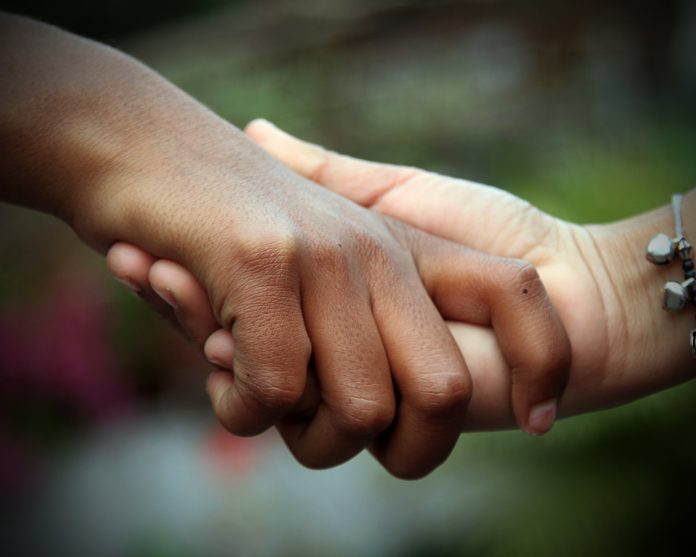UN’s Under-Secretary-General for Humanitarian Affairs, Mark Lowcock, stresses the importance of anticipatory action when it comes to humanitarian affairs
Much about COVID-19 remains unknown, but one thing is certain: the pandemic is causing the biggest global economic slowdown in living memory.
Even in many low- and middle-income countries where the epidemic is yet to peak, economies are shrinking as governments try to suppress the spread of the disease, export earnings decline, remittances dry up and tourists stay home. We observe incomes plummeting, jobs disappearing, and children missing school, vaccinations and meals. The worst of the pandemic in the world’s poorest countries is still to come.
Socioeconomic impact of COVID-19
Left unchecked, the socioeconomic impacts we see now have the potential to lead to rapidly rising poverty, widespread famine, violent conflict and a sharp rise in the spread of diseases like measles and malaria. They could undo decades of development gains and pose a greater threat to some developing countries than the virus itself. And until the crisis is over everywhere, it’s not over for anyone.
We must act now, in anticipation of what’s coming next. We can apply lessons from recent developments in the field of anticipatory action to the current crisis.
Disease outbreaks
In 2019, OCHA began exploring the use of tools to predict the risk of disease outbreaks. One such tool is the Global Cholera Risk Model, a programme funded by the U.S. National Aeronautics and Space Administration and led by researchers at the University of Maryland and the University of Florida. Using climate and vulnerability data, the model can provide up to four weeks’ advance warning of the risk of cholera breaking out in an area as small as two football fields.
Humanitarian agencies could use this signal to trigger targeted interventions to prevent an outbreak before a single person becomes ill with diagnosed cholera, including health education, water treatment and distribution of hygiene products.
In another example, the Government of Bangladesh, the Red Cross and the World Food Programme identified communities about to be flooded in North Western Bangladesh. The traditional approach would have been to evacuate people once flooded and give them food and shelter while displaced. Last year, more than 6,500 families were instead each given $53 days in advance of the flooding. People were able to move to safer areas, fortify their homes and buy essential supplies.
Meanwhile, in Somalia, the United Nations and the World Bank developed a crisis risk financing mechanism to respond to extreme droughts. When a severe drought is forecast, funds from the UN’s Central Emergency Response Fund (CERF) are released to help people withstand its impact. This includes distributing drought-tolerant or short-season seed varieties to sustain food production, providing supplementary fodder to livestock, launching animal health campaigns, rehabilitating water points, and scaling up cash transfers to stabilise the purchasing power of vulnerable people.
The COVID-19 crisis is a crisis unlike anything we have experienced in our lifetimes. However, two key elements of the anticipatory approach are relevant to our approach to dealing with the impacts of this pandemic in developing countries.
First, by using data, predictions, and forecasts, we can anticipate humanitarian needs and think through actions to mitigate or prevent suffering before a crisis spirals out of control. We can identify areas of increased risk both from the virus itself, for instance, because of crammed living conditions in refugee camps or weak healthcare systems, and from the economic shock, because of reliance on oil exports or the tourism industry.
Containment measures
Many governments implemented containment measures before they had confirmed cases of the disease. Anticipating economic hardship, they scaled-up social safety nets and provided economic stimulus. Where predictions vary greatly or where uncertainty is high, developing scenarios and crisis timelines allow us to identify how the crisis may evolve, and what early actions – taken on a ‘no-regret’ basis – could mitigate the impact.
Financing
Second, a flexible and pre-agreed approach to financing with fast disbursement. Financing from the multilateral system can give countries access to grants or cheap loans to respond to emergencies and help with a more sustainable reconstruction. Grants to humanitarian agencies can be unearmarked and flexible to allow response to a fast-changing situation and emerging risks. Likewise, giving cash to vulnerable people is often the best way to help them.
In response to COVID-19, this anticipatory spirit has now been embraced by many countries, working hard to get ahead of the epidemic curve and flatten it. To ensure that a transient shock does not result in permanent poverty, 190 countries and territories have planned, introduced or adapted social protection measures in response to COVID-19. But more is needed.
Vulnerable people
Our best estimate is that the cost of protecting the most vulnerable 10% of people in the world’s poorest countries from the very worst impacts of the pandemic is approximately $90 billion. That is only 1% of the economic stimulus rich countries have injected so far into their economies.
The smartest and most dignified option is to invest billions of dollars now to try to solve the problem as fast as we can, instead of allowing the problem to go on for decades, which would cost the world trillions of dollars and millions of lives and livelihoods.
At a time of extraordinary and unprecedented global crisis, we need to respond globally with extraordinary and unprecedented measures.











